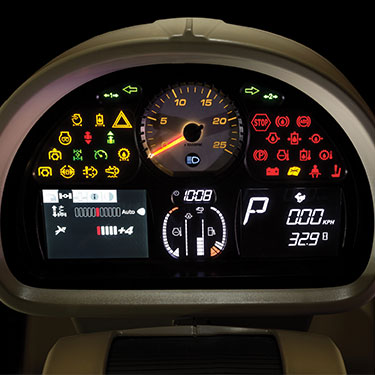The farmers using Massey Ferguson tractors need to know what the various Massey Ferguson warning lights mean. Different colors indicate different conditions, and some require immediate attention while others can wait until later. This article will explain the meaning of all the Massey Ferguson warning lights.
The Different Massey Ferguson Warning Lights
Different Massey Ferguson warning lights mean different things. Here is a guide to what each of them indicates:
• Red Light – This means that there is a problem with the engine or another critical component. If this light comes on, you should stop the tractor immediately and seek repairs.
• Amber Light – This means that there is a potential issue with the tractor. It could be something as simple as low oil pressure or a loose belt. You should check the issue and make sure it is resolved before continuing to use the tractor.
• Green Light – This means that the system is working correctly. If this light is on, everything is fine.
• Blue Light – This means that the tractor is in cruise control. This is not necessarily a warning, but just an indication of the current status.
If any of the warning lights come on, you should take action accordingly to resolve the issue. Massey Ferguson tractors are reliable machines, but they need to be properly maintained in order to function properly. By understanding what each warning light means, you can keep your tractor running smoothly for years to come.
What Each Massey Ferguson Warning Light Means
When you drive a Massey Ferguson tractor, you may see one or more warning lights on the instrument panel. These lights are meant to alert the operator to potential issues so that they can be addressed in a timely manner. Here is a quick guide to understanding what each of the most common warning lights means:
Warning Light 1: Master Warning Light
This is the most important of all the warning lights, as it indicates that there is an issue with the tractor that needs to be addressed immediately. If this light is on, stop driving the tractor and investigate the problem.
Warning Light 2: Engine Oil Pressure Warning Light
This light comes on when the engine oil pressure is low. This can be caused by a variety of things, such as a clogged oil filter or low oil level. Check your oil level and filter immediately if this light comes on.
Warning Light 3: Coolant Temperature Warning Light
This light indicates that the engine coolant temperature is too high. This can be caused by a variety of things, such as a stuck thermostat or low coolant level. Stop driving the tractor and check your coolant level immediately if this light comes on.
How to Respond to Massey Ferguson Warning Lights
If you're like most people, you probably don't know what all the warning lights on your Massey Ferguson tractor mean. That's ok - we're here to help! In this blog post, we'll explain the meaning of some of the most common MF warning lights, so you'll know what to do if one pops up while you're working.
The first light we'll talk about is the engine oil pressure light. This light comes on when the oil pressure in the engine is low. If this happens, you should stop the tractor and check the oil level. If it's low, add more oil until the light goes off. If the light stays on after adding oil, there may be a problem with the oil pump or pressure sensor - you should have a service technician check it out.
Next is the coolant temperature light. This one comes on when the engine is running hotter than normal. If you see this light, stop the tractor and let it cool down for a bit. You may need to add coolant if the level is low. If the light stays on after adding coolant, there could be a problem with the cooling system - again, have a service technician take a look.
We hope that this article has helped you understand the meaning of some of the most common Massey Ferguson warning lights. Although these lights are designed to give you a heads up about a potential issue, they shouldn't be ignored. If you see a warning light on your dash, make sure to consult your owner's manual or contact a qualified technician to get to the bottom of the problem.

